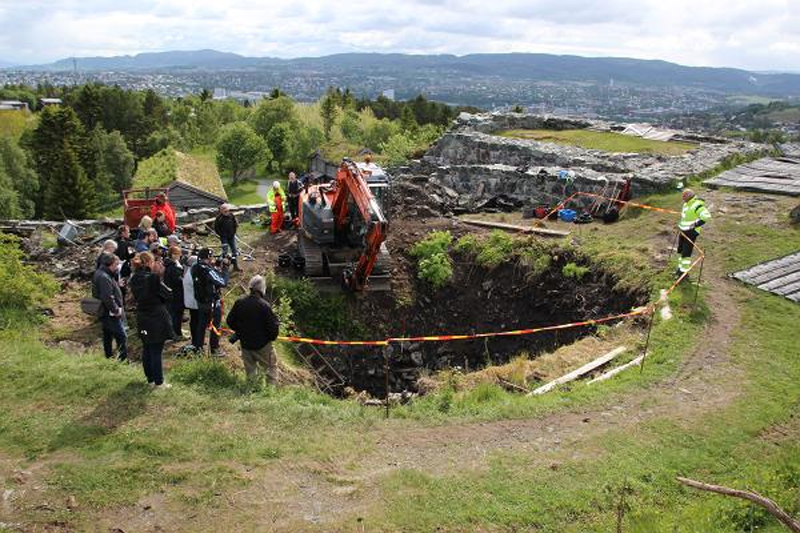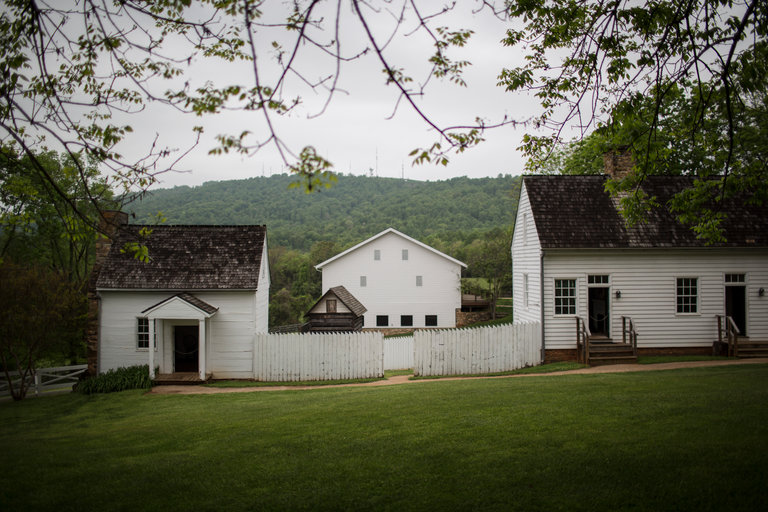2016 has been quite a year, what with the American presidency changing hands, Brexit, David Bowie’s death, and countless other events. Whether it’s been a good year for one person or a difficult one for another, there’s one undisputed fact about 2016 that remains standing: it’s been a fantastic year for archaeology.
We’ve been covering all the best archaeological news throughout the year, and now we’ve compiled a list of the best discoveries that happened this year that you don’t want to miss out on.
10. King Tutankhamen’s Space Blade

PHOTO: treasurenet.com
You would think with all of the archaeology that’s already been done on King Tut’s tomb since 1925, when Howard Carter discovered it, there’d be nothing more to learn. Well, that just isn’t the case. This year, researchers from Milan Polytechnic, Pisa University, and the Egyptian Museum in Cairo discovered that the fine blade buried with King Tut was made from iron that came from a meteorite.
9. New Hawaiian Petroglyphs

PHOTO: westerndigs.org
Glyphs never before discovered on the western coast of Oahu Island, Hawaii were revealed at low tide this year in July. Seventeen glyphs have been discovered and recorded in total, spanning an impressive 60 feet of coastline. Glen Kila, a native from Oahu commented “They record our genealogy and religion.”
8. Historical Confirmation of Norse Sagas

PHOTO: pasthorizonspr.com
In Trondheim, Norway, a skeleton at the base of an ancient well confirmed events from Sverris Saga to be true. Scholars have, for some time questioned whether or not the saga is a reliable source for Norway’s history. The skeleton found at the bottom of the well confirms the Saga’s story that, when the Baglers burned down King Sverre’s castle, they destroyed the city’s water supply by the throwing one of King Sverre’s men into the well and filling it with rocks. It’s an enormous find for Norwegian historians and confirms that, if Sverris Saga is right on this one detailed event, it’s probably right on the others.
7. The Largest Mayan Tomb Ever Found

PHOTO: cahalpech.com
At the archaeological site of Xunatunich, in Belize, discovered something new this year. The site’s been under excavation since the 1890s, but all this time, no one knew that the site was hiding the largest Mayan tomb ever found just beneath the surface! The tomb is home to an ancient, powerful priest-king who died early and was buried with a host of obsidian knives, pots, vases, jade beads, and animal remains that were probably a jaguar, once.
6. A Royal Tomb That Shattered Historians’ Misconceptions About the Moche
Originally, historians believed that the Moche culture of ancient Peru (contemporaries with the Maya), had a single ruler who was king over a male-dominated culture. Well, this new tomb discovered this year is shattering that completely. Archaeologists found a tomb on the northern coast of Peru that’s home to a 1,200 year-old skeleton. The tomb was filled with thousands of precious artifacts, and the skeleton was wearing a rich headdress, a beaded necklace, and was buried with sacrificial victims. It’s clear the buried person was a religious figure, warrior, and powerful ruler. The catch? The skeleton’s female. It seems the Moche weren’t as male-dominated as everyone assumed.
5. Archaeologists Figured Out How to Date Aboriginal Rock Art

PHOTO: ansto.gov.au
Australian rock art has been, until this year, impossible to date using radiocarbon dating methods. The ancient artists used ochre, a mineral pigment that doesn’t contain carbon, to create their paintings. Well, this year, with a little help from microorganisms on the rock’s crust, archaeologists have developed a technique that can finally tell us just how old these paintings are, giving us a much better picture of Australian history.
4. The Oldest Footprints in North America To-Date

PHOTO: apogeephoto.com
This year, the oldest footprints discovered to-date in North America were found in the in the Chihuahuan Desert in Mexico. They predate the oldest footprints by 5,000 years, making them over 10,000 years old. Using some soil taken from the prints, researchers have been able to find all kinds of evidence for how the person who made them lived. They’re proving to be an immense find for the archaeological community,
3. Almost 16,000 Telegrams From the American Civil War

PHOTO: latimes.com
Researchers have finally finished cataloging and sorting through a box of telegrams given to the Huntington Library in 2012. The box held 15,971 telegrams, to be exact. They’d been lost for over a century, but now their voices are finally being heard, painting a front line, vivid picture of the Civil War that can be read as easily as a Twitter feed.
2. Monroe’s Modest “Cabin-Castle” Wasn’t So Modest

PHOTO: nytimes.com
For years, the picture painted by tour guides at Highland, James Monroe’s historical home, was one of modesty and tranquility. It was thought that he lived in a two-room, one-story, humble cottage that, as he wrote in his accounts, was called his “cabin-castle”. Well, this picture was shattered – embarassingly-so -when archaeologists working on the site discovered James Monroe’s real home nearby – a lavish mansion with a field-stone foundation that measured 74 by 30 feet. The house the historians and tour guides had thought was his home was actually just the guest house. Oops?
1. “Ava”

PHOTO: BBC News
The face you’re looking at is 3,700 years old. This year, archaeologists and specialists with the Caithness Horizons museum in Thurso, Scotland, created her using top-of-the-line facial reconstruction software working from a body discovered in an unmarked grave at Achavanich in 1987. Maya Hoole, the archaeologist in charge of the Achavanich site said, “I want people to remember that this is not just a cluster of bones. She was once a human being, with a name, an identity and a place in a long lost community.”


